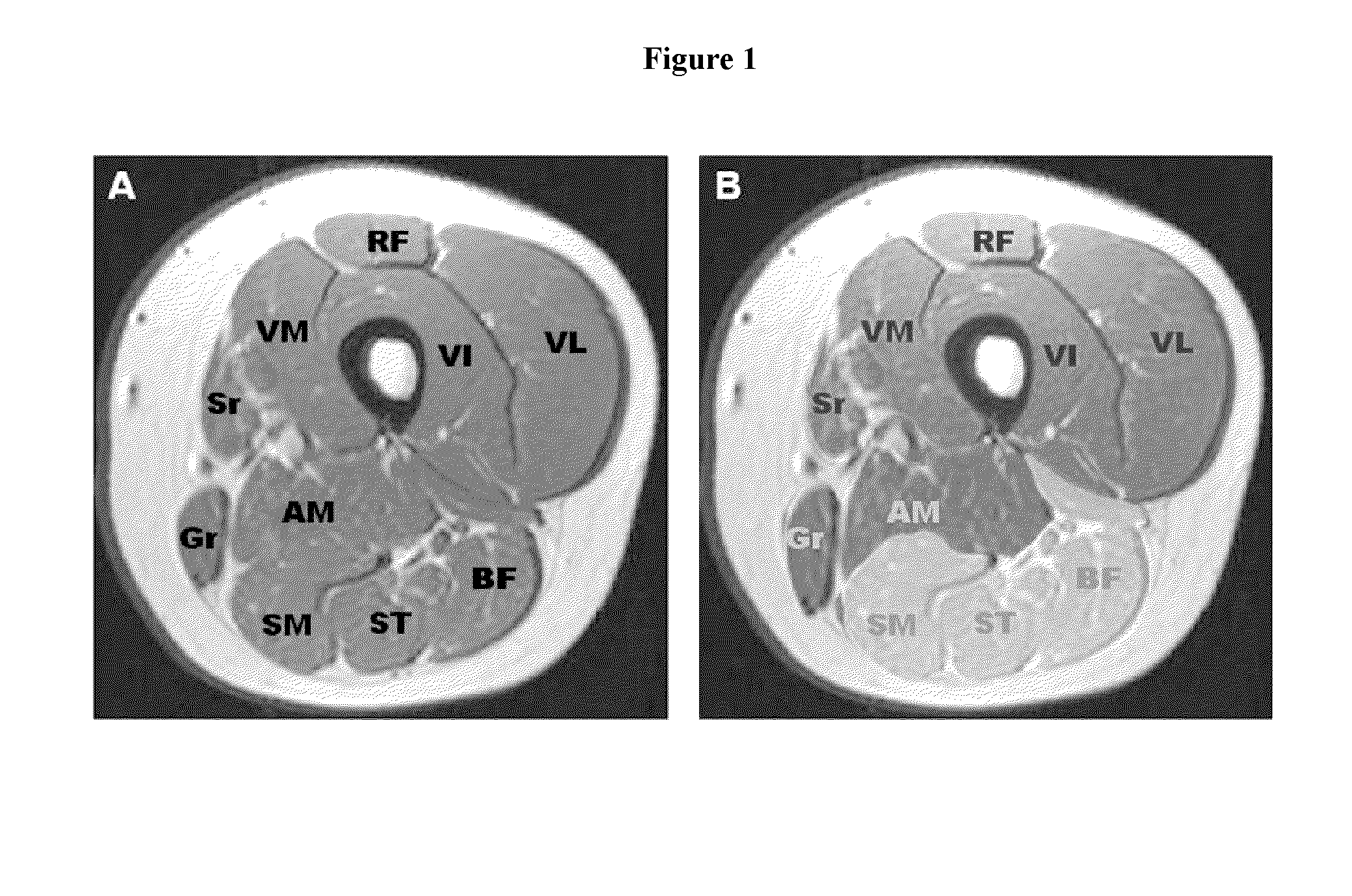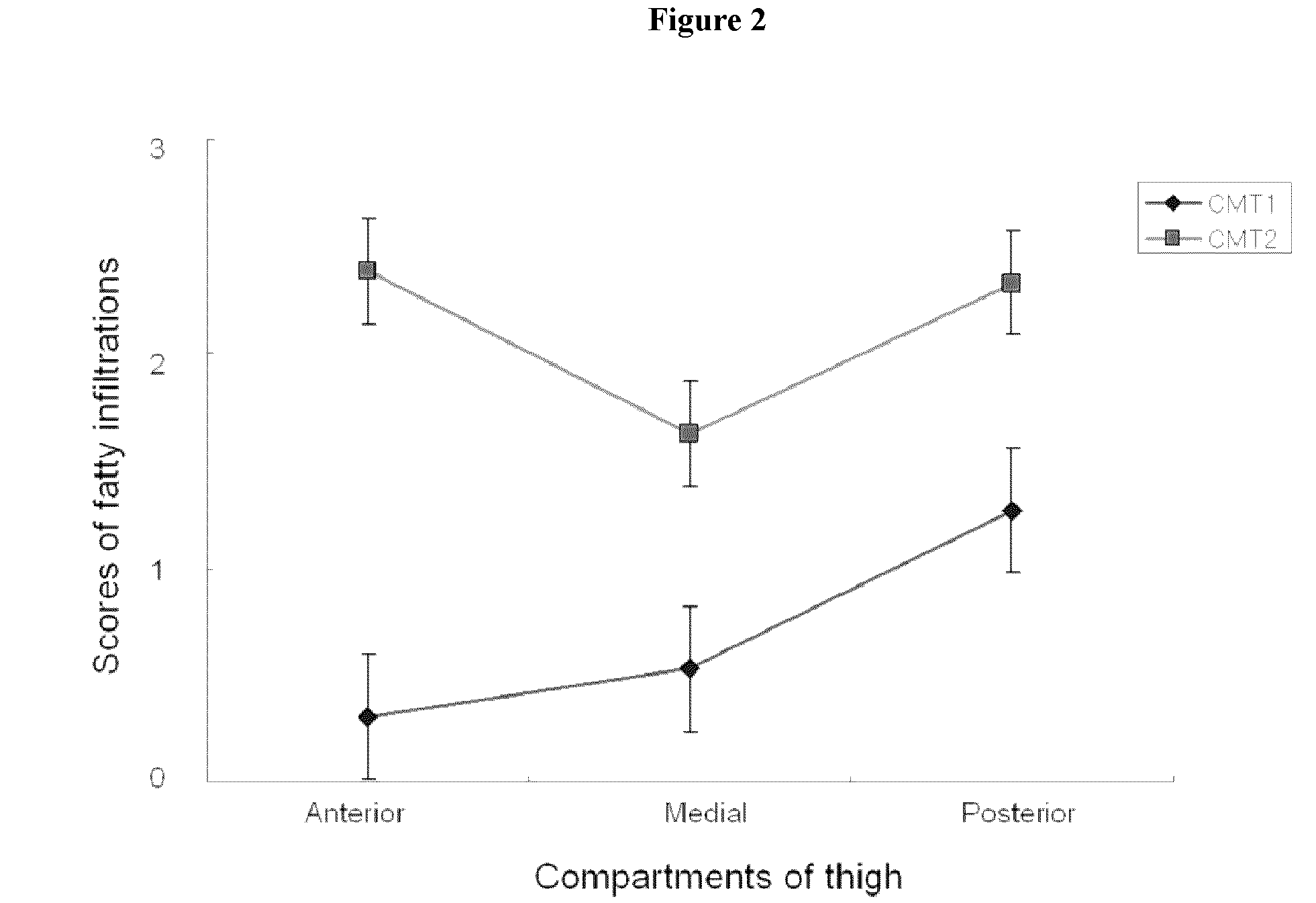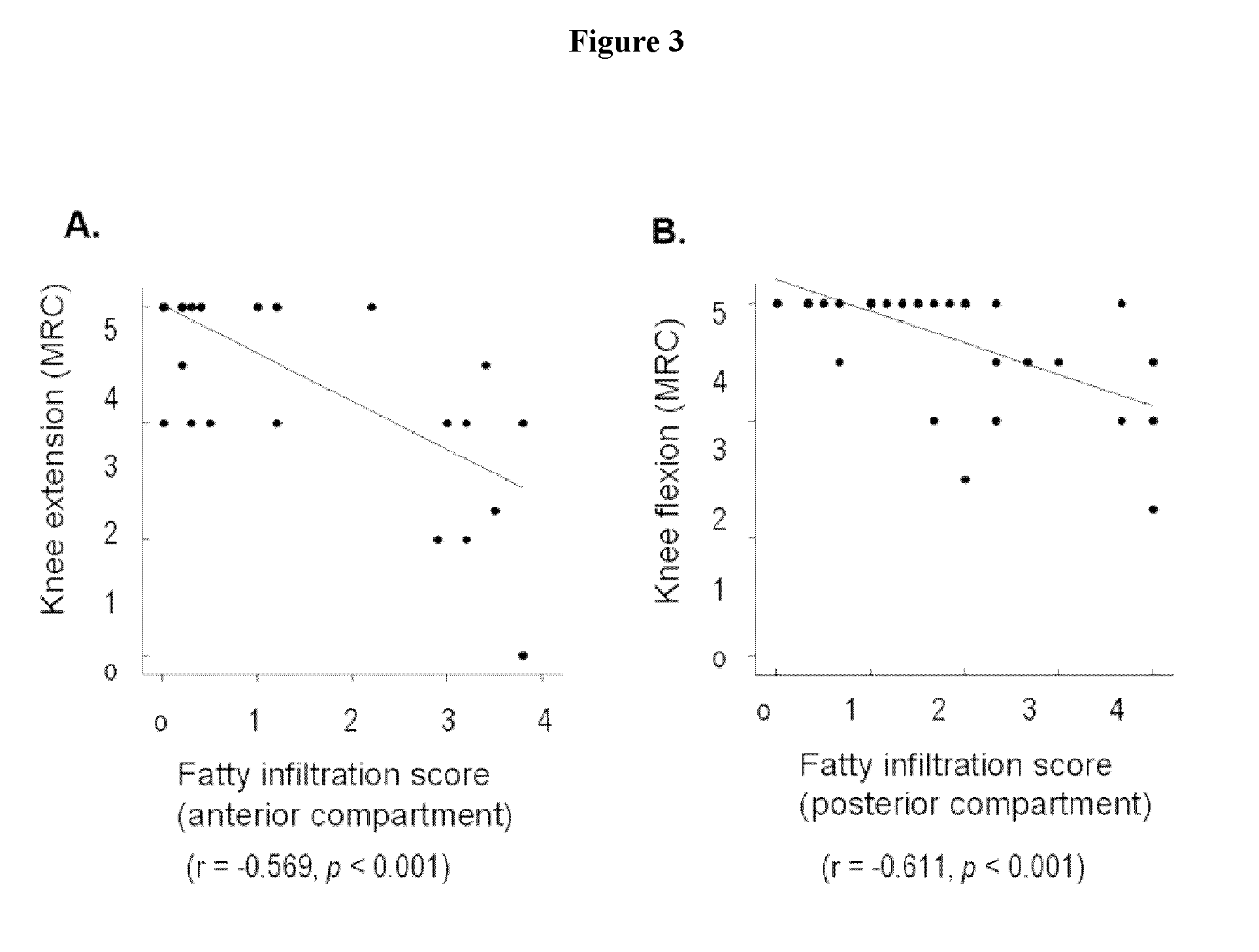Method for diagnosing cmt1a and cmt2a by MRI
- Summary
- Abstract
- Description
- Claims
- Application Information
AI Technical Summary
Benefits of technology
Problems solved by technology
Method used
Image
Examples
Embodiment Construction
[0027]Hereinafter, the present embodiments are described in more detail with reference to the following non-limiting Examples including specific examinations and analysis examples.
1. Research Subject and Method
[0028](1) Subject
[0029]This research was tested for 37 patients (15 males, 22 females) who were given a diagnosis of CMT based on neurological diagnostic findings and electrophysiological inspection and visited the department of neurology, or were requested from other sources, and underwent MRI on proximal lower extremities due to accurate diagnosis of PMP22 or MFN2 gene mutations. Of the patients, the number of CMT1A patients showing autosomal dominant inheritance and demyelinating neuropathy was 26, and the number of CMT2A showing autosomal dominant inheritance and axonal neuropathy was 11. A normal control group with respect to gene mutations included 105 individuals (43 males, 62 females) who were free of neuropathic findings in clinical and neurological examination and ne...
PUM
 Login to View More
Login to View More Abstract
Description
Claims
Application Information
 Login to View More
Login to View More - R&D Engineer
- R&D Manager
- IP Professional
- Industry Leading Data Capabilities
- Powerful AI technology
- Patent DNA Extraction
Browse by: Latest US Patents, China's latest patents, Technical Efficacy Thesaurus, Application Domain, Technology Topic, Popular Technical Reports.
© 2024 PatSnap. All rights reserved.Legal|Privacy policy|Modern Slavery Act Transparency Statement|Sitemap|About US| Contact US: help@patsnap.com










